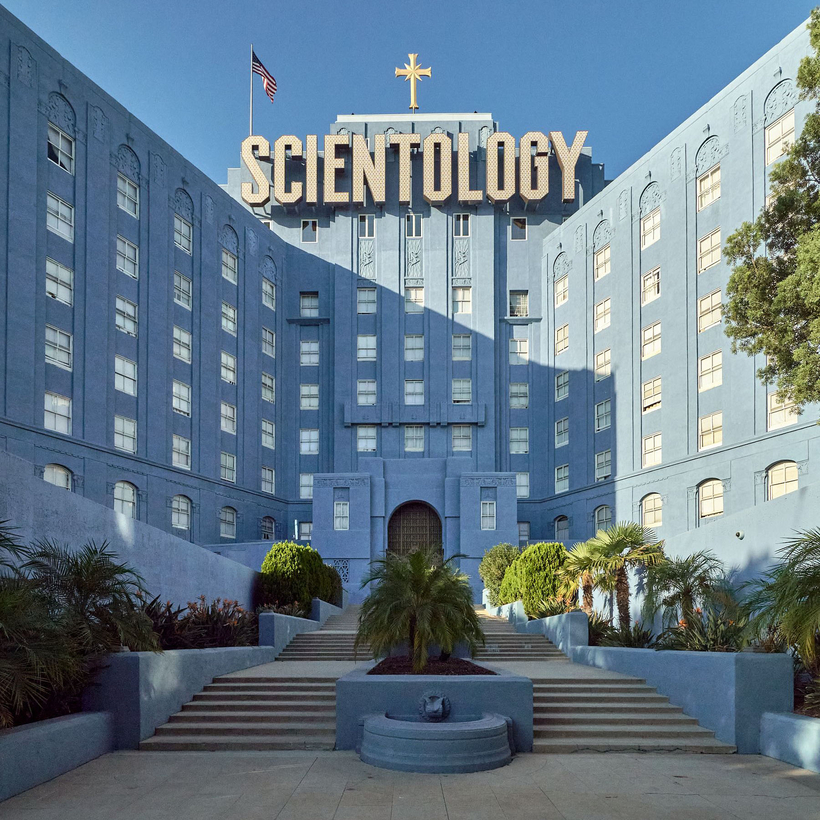I once toyed with the idea of taking up Scientology. I had no illusions that it would enable me to run up the sides of buildings like Tom Cruise or hone my brain into a perfect diamond, though either would have been neat. I just thought it might give me the locked-on-target focus to cut through the everyday dribdrab.
More than once I passed the Church of Scientology in Times Square and was tempted to pop in for a “free tour” and pick up a few colorful brochures without being abducted. What disabused me about signing up for an introductory course was not only Scientology’s culty reputation but the realization of how much work was involved in becoming a practicing Scientologist. All that studying, auditing, testing, rigorous cross-examination, and mastering of arcana to facilitate the long trek across what Scientology called “the Bridge to Total Freedom”—it seemed a bit much, frankly, closer to pursuing a graduate degree than achieving immortal incandescence. So I decided to dabble elsewhere, though Scientology continued to fascinate me as a phenomenon with its scope, reach, cultural imprint, eruptive scandals, and determined place as the world’s most successful modern religion.

So when Air Mail asked me to take a look at the Scientology Network, I was happy to oblige—this was the kind of study I like to do because it entails not having to go anywhere or talk to anybody, as nature intended.
Launched in 2018 with Hollywood hoopla, Scientology TV is a 24-hour streaming infotainment channel and app available on DirecTV, Apple TV, and Roku. You can also watch on its own online home base. Production quality is glossy and impressive, projecting a sense of infinite resources.
All that studying, auditing, testing, rigorous cross-examination, and mastering of arcana to facilitate the long trek across what Scientology called “the Bridge to Total Freedom.”
The network is the brainchild of David Miscavige, the leader of the Church of Scientology and captain of the Sea Organization (aye, matey). Miscavige’s groomed business exterior—he resembles a Sunbelt Republican—belies the soap-opera drama of his reign. His father published a memoir titled Ruthless: Scientology, My Son David Miscavige, and Me. His niece, Jenna, did her own memoir, Beyond Belief: My Secret Life Inside Scientology and My Harrowing Escape. As for David’s wife, Shelly, she disappeared from public view sometime around 2005, her mysterious whereabouts the subject of a Vanity Fair investigation by Ned Zeman that became the basis for a Vanity Fair Confidential documentary, both titled “Scientology’s Vanished Queen.”

If Miscavige serves as the occasional public face and chief maestro of Scientology TV, Scientology’s founding father, L. Ron Hubbard, is the network’s pervasive, guiding presence—the holy ghost in the machine. Show after show is dedicated to his origin story, his action-packed exploits, and his gospel teachings—a series of illustrated tutorials. The network also runs dark exposés of its primary nemesis—the pharmaceutical-psychotherapeutic industrial complex—with such fun titles as Psychiatry: An Industry of Death and Therapy or Torture: The Truth about Electroshock. No one’s going to break out the popcorn for these.
However, the bulk of Scientology TV’s programming is devoted to series offering a friendly welcome to prospective inductees, such as Destination: Scientology, a global travelogue escorting viewers through the airy, gold-accented splendors of Scientology centers in locales like Copenhagen, Dublin, and Mexico City. Rather than wheel out the church’s top celebrity draws (Tom Cruise, Kirstie Alley, John Travolta, et al.), the channel slaps on a more neighborly face with multiple installments of “I Am a Scientologist” and “Meet a Scientologist,” which introduce us to members in every walk of life who come across as gifted, approachable, can-do folk (I wouldn’t mind having some of them as imaginary friends), not pod people programmed to replicate and never blink.
Scientology’s founding father, L. Ron Hubbard, is the network’s pervasive, guiding presence—the holy ghost in the machine.
By promoting this extended, diverse family of mostly workaday individuals, couples, and communities as if they were all part of one big kumbaya, Scientology TV is conducting a charm offensive to counteract the horrendous P.R. that has wracked the church over the last decade.

Where to begin? Perhaps with Lawrence Wright’s acclaimed book Going Clear: Scientology, Hollywood, and the Prison of Belief (2013) or Alex Gibney’s 2015 documentary based on it. Leah Remini, a King of Queens co-star and a high-profile defector, then made the docuseries Scientology and Its Aftermath (2016–19) and the podcast Scientology: Fair Game, which together waged warrior-princess combat against the intimidation tactics of the church and made her Scientology’s “Suppressive Person” public enemy No. 1.
And presently there is the upcoming trial of Danny Masterson, the former co-star of That ’70s Show and The Ranch and a prominent Scientologist, who faces up to 45 years in prison after being charged with three counts of forcible rape. (The actor pleaded not guilty to each charge in a January arraignment.) This trial may be yet another seismic rattler for Scientology. A 2019 civil suit, filed by five plaintiffs, claims that agents working for the church stalked and intimidated them after they reported assault allegations against Masterson to the police. (Best place to track Scientology’s ongoing tribulations is Tony Ortega’s invaluable Web site, the Underground Bunker.)

Beneath the headlines surges perhaps an even greater challenge to Fortress Scientology: competition from the munching termite armies of QAnon. For wayward spirits casting about for a creed that requires minimum intellect and bottomless gullibility, QAnon offers significant advantages over Scientology: no dues, no meetings, no assigned texts, no hierarchy, no firm tenets, no ceremonial occasions, just the ability to receive the latest garbled messages from the orc pit. Scientology is top-down, secretive, codified, anal; QAnon is bottom-up, blabby, free-associative, incontinent.
How does Scientology TV reckon with such negative vectors? It doesn’t. Doesn’t even try. It turns a blind camera eye on internal and external turmoil, operating a closed informational loop and ignoring bad news by pretending it doesn’t exist, casting a WandaVision hexagon around the Scientology enterprise intended to nourish the illusion that everything’s just ducky inside, never a rainy day. But Wanda’s Hex couldn’t stave off harsh reality forever, and Scientology’s force field probably can’t either. The happy sheen of Scientology TV isn’t fooling anybody.
James Wolcott is a columnist for AIR MAIL


